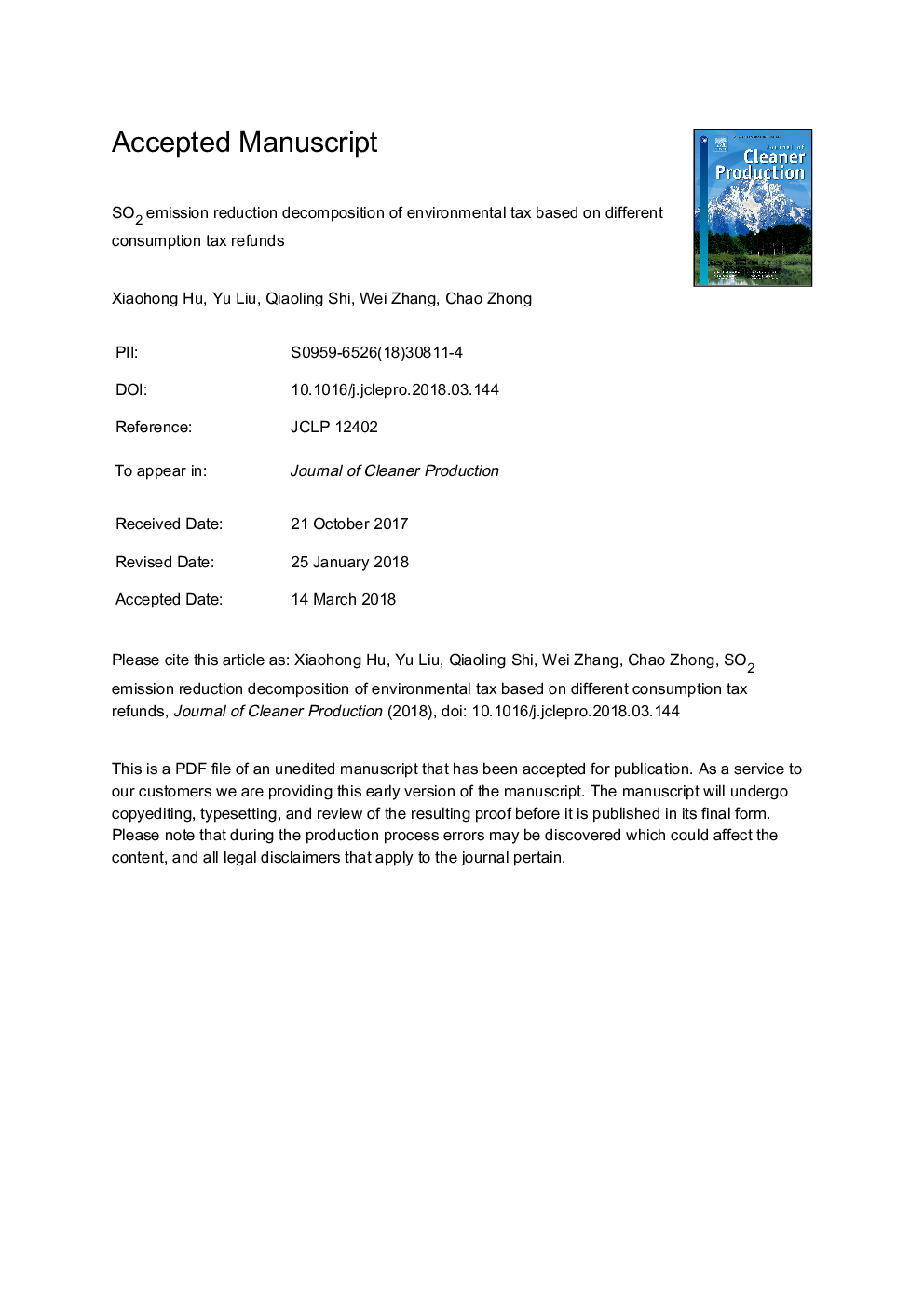| Article ID | Journal | Published Year | Pages | File Type |
|---|---|---|---|---|
| 8096353 | Journal of Cleaner Production | 2018 | 30 Pages |
Abstract
Acid rain in China is mainly caused by man-made SO2 emission. In order to reduce SO2 emission, "Environmental Protection Tax Law of People's Republic of China" has been implemented on January 1, 2018. This study, based on environmental CGE model, analyses the impact of different ratio of environmental tax revenue refunded to consumption tax on China's economy and further decomposes sectors' SO2 emissions reduction into output scale effect, process emission effect, intermediate input substitution effect, energy substitution effect and imported-domestic energy substitution effect. Results show that environmental tax can effectively reduce SO2 emission, and not always hurt the economy. With the tax refund ratio rising, GDP appears an upward trend in varying degrees (â0.25%-0.21%), and SO2 emission reduction shows a downward trend (â3.81%â¼-3.28%). A critical point of tax refund ratio is found to locate at 59.5%, which represents the maximum amount of SO2 emission reduction without sacrificing economy. For the SO2 emission reduction, sectors' combustion emission reduction of oilgas and coal play a leading role. After specific decomposition, the energy substitution effect dominates the SO2 emission reduction. Further, emission reductions of SO2 mainly focus on high pollution sectors such as power, building materials manufacturing and paper. Factors driving emission changes in sectors may differ substantially. Therefore, the environmental tax does not necessarily hurt the economy, and can effectively curb high pollution sectors' SO2 emission, stimulating the demand for clean energy like gas and upgrading energy structure.
Related Topics
Physical Sciences and Engineering
Energy
Renewable Energy, Sustainability and the Environment
Authors
Xiaohong Hu, Yu Liu, Lingyu Yang, Qiaoling Shi, Wei Zhang, Chao Zhong,
